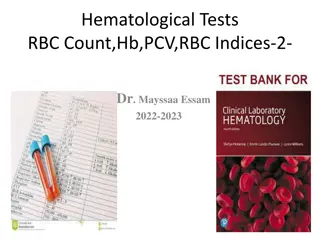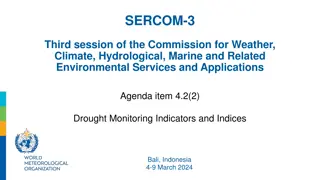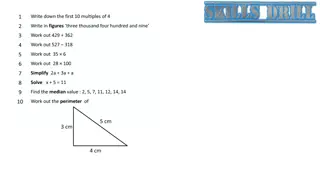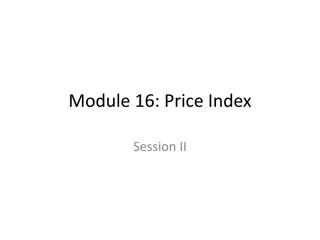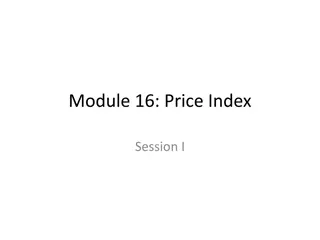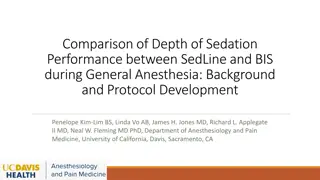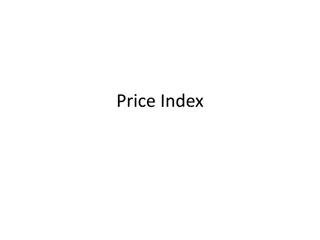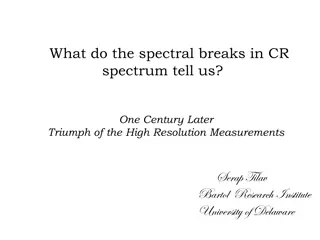
Understanding Indices in Public Health Dentistry
Learn about the specific learning objectives, definition, objectives, ideal requisites, and criteria for selecting an index in the field of Public Health Dentistry. Explore the importance of indices in understanding population health and disease processes.
Download Presentation

Please find below an Image/Link to download the presentation.
The content on the website is provided AS IS for your information and personal use only. It may not be sold, licensed, or shared on other websites without obtaining consent from the author. If you encounter any issues during the download, it is possible that the publisher has removed the file from their server.
You are allowed to download the files provided on this website for personal or commercial use, subject to the condition that they are used lawfully. All files are the property of their respective owners.
The content on the website is provided AS IS for your information and personal use only. It may not be sold, licensed, or shared on other websites without obtaining consent from the author.
E N D
Presentation Transcript
RUNGTA COLLEGE OF DENTAL SCIENCES & RESEARCH INDICES DEPARTMENT OF PUBLIC HEALTH DENTISTRY 1
Specific learning Objectives At the end of this presentation the learner is expected to know ; Sr.no Learning objectives Domain Level Criteria condition 1. Define & describe objectives of index Cognitive Must know ALL 2. Enlist ideal requisites of an index Cognitive Must know ALL 3. Enumerate criteria for selecting an index Cognitive Must know ALL 4. Classify index Cognitive Must know ALL 2
CONTENTS Definition & Objectives of index Ideal requisites of an index Criteria for selecting an index Classification of index 3
DEFINITION : : Index has been defined; numerical value describing the relative status of a population on a graduate scale with definite upper and lower limits, which is designed to permit and facilitate its comparison with other population classified by the same criteria and methods. - RUSSEL AL 4
OBJECTIVES : Increase understanding of the disease process. To discover population at high and low risk. To define the specific problem of investigation. 5
IDEAL REQUISITES OF AN INDEX : Clarity, simplicity and objectivity. Validity. Reliability. Quantifiability. Sensitivity. Acceptability. 6
CRITERIA FOR SELECTING AN INDEX : Simple to use and calculate. Should permit the examination . Should require minimum armamentarium. 7
Criteria should be clear and easily understandable. Free from subjective interpretation. Should define clinical conditions objectively. Should be highly reproducible 8
Should have validity and reliability, Should be equally sensitive throughout the scale Should not cause discomfort to the patient And should be acceptable to the patient. 9
CLASSIFICATION OF INDICES Direction in which their scores can fluctuate, Indices are classified; Reversible Irreversible 10
REVERSIBLE Measures cumulative condition that can be changed REVERSIBLE Increase or decrease on subsequent examinations. Ex : Indices that measure gingival conditions 11
IRREVERSIBLE Measures cumulative conditions that will not change. Ex : An index that measures dental caries. 12
Depending upon the extent "Full mouth" or "Simplified". FULL MOUTH Measures the patients entire periodontium or dentition. Eg. : Russell's Periodontal Index (PI). SIMPLIFIED INDEX Measure only a representative sample of the dental apparatus. Eg. : Greene & Vermillion's Oral Hygiene Index - Simplified (OHI-S) 13
classified as entity which they measure like ; Disease Index Symptom Index Treatment Index 14
The 'D' (decay) portion -a disease index. The Indices measuring gingival/sulcular bleeding Are essentially symptom indices. The 'F' (Filled) portion --a treatment index. 15
Dental indices can also be classified as, SIMPLE INDEX Measures presence or absence of a condition. Eg. : Plaque index 16
CUMULATIVE INDEX Measures all the evidence of a condition Eg : DMFT/DMFS Index - dental caries. 17
SUMMARY Ideal index should possess characteristics such as simplicity, objectivity, validity, reliability & sensitivity. 18
EXPECTED QUESTION Enlist ideal requisites of an index (SAQ) Define ,describe and classify objectives of index (LAQ) Enumerate criteria for selecting an index (SAQ) 19
Bibliography Bibliography Textbook of Essentials of Preventive & Community Dentistry, by Soben Peter, 4rd Edition. Arya Publishers, Chpt. 13 pg no.311-359 Community Dentistry, by Vimal Sikri,Poonam Sikri, 1st Edition,CBS Publishers, Chpt.7,pg no.336 Text book of Preventive & Social Medicine, by Gupta & Mahajan, 3rd Edition,Japee Publishers , Chpt. PARK S Textbook of Prfeventive and Social Medicine ,by K. Park,17th Edition,Banarasidas Bhanot Publishers, Chpt. Textbook of Preventive and Community Dentistry,1st Edition, by S.S. Hiremath,Elsevier Publications, , Chpt. 17 pg no183-204 20
THANK YOU 21

